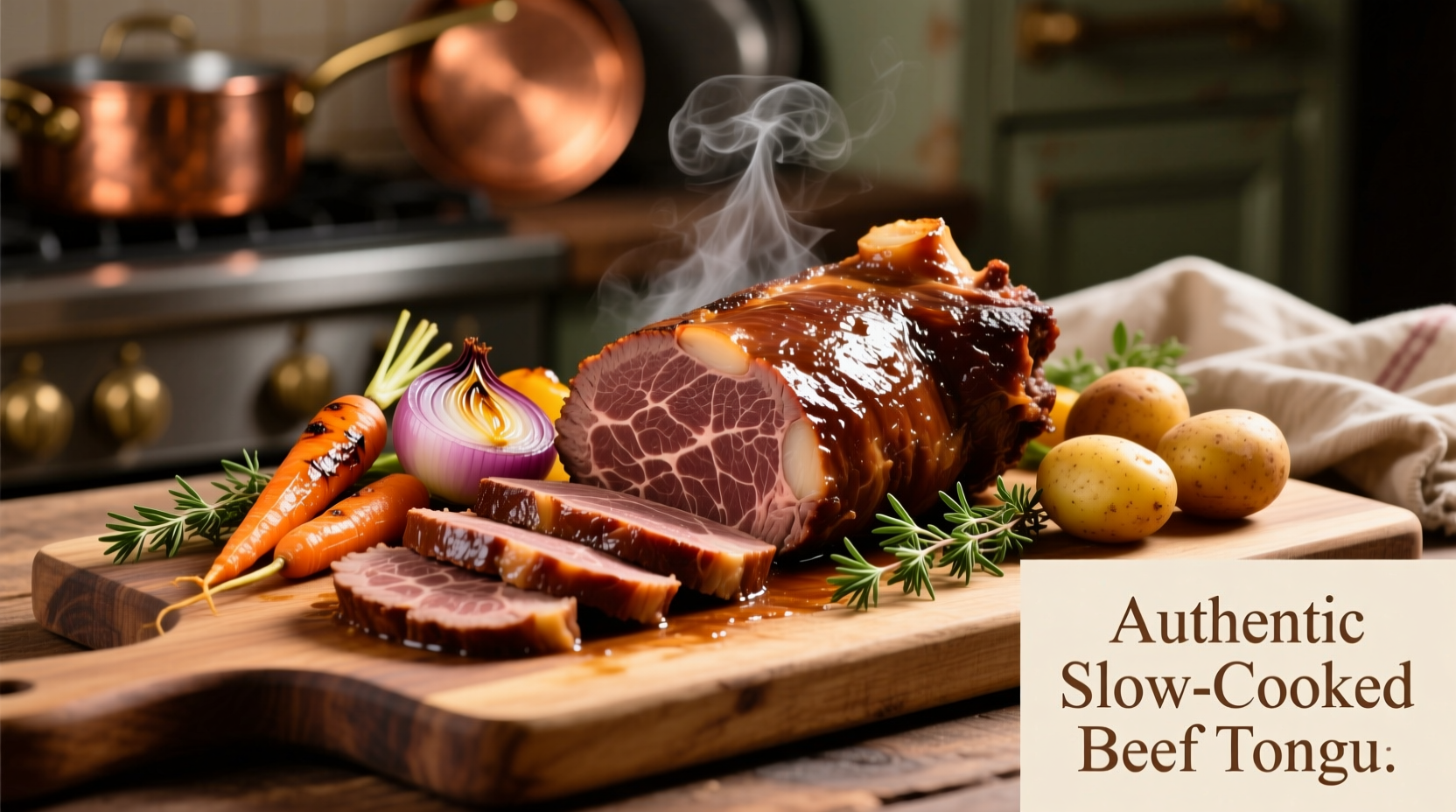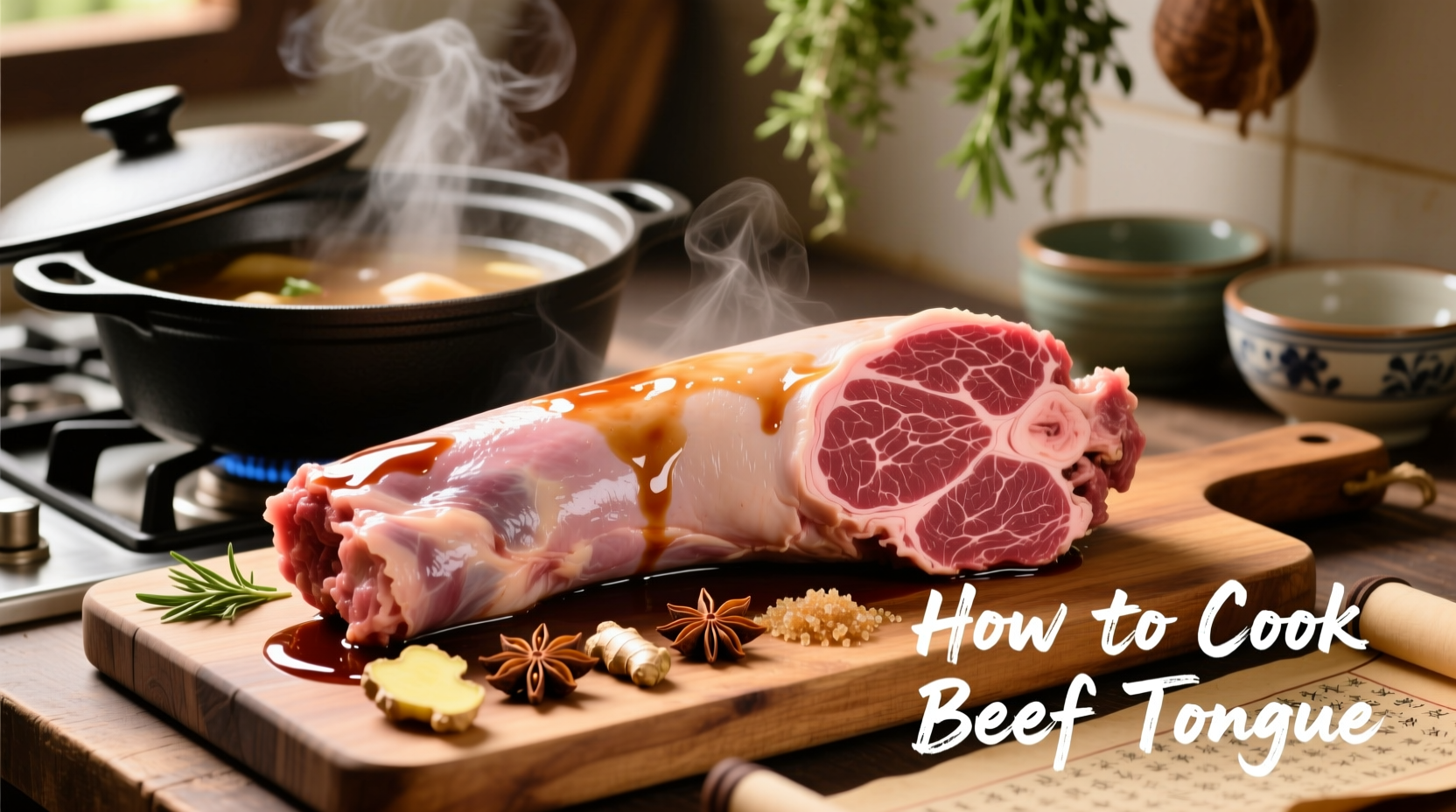Beef tongue might seem intimidating at first glance, but this nutrient-rich cut has been cherished across cultures for centuries. When prepared correctly, it transforms into one of the most tender, flavorful meats you'll ever taste—reminiscent of premium steak with a delicate texture that melts in your mouth. As a culinary professional who's prepared this traditional ingredient in both fine dining kitchens and home settings, I've perfected a reliable method that guarantees success every time.
Whether you're exploring traditional Mexican lengua tacos, Jewish-style braised tongue, or Korean seolleongtang, understanding the proper technique is essential. This guide walks you through each critical step with professional insights you won't find elsewhere—no shortcuts, no guesswork, just proven methods that deliver consistently tender results.
The Cultural Journey of Beef Tongue
Beef tongue has maintained culinary significance across civilizations for good reason. Historically undervalued as "offal," this muscle-rich cut provided essential nutrition during times of scarcity. According to the National Institutes of Health Food Composition Database, tongue contains significant amounts of zinc, iron, and B12—nutrients vital for immune function and energy metabolism.
From Native American preservation techniques to European aristocratic banquets where tongue signaled resourcefulness, this ingredient has evolved from necessity to delicacy. Modern chefs worldwide now celebrate its unique texture and flavor profile, with traditional preparations still thriving in Mexican taquerías, Korean bone broth houses, and Jewish delis.

Essential Preparation Techniques
Proper preparation makes all the difference between exceptional tongue and disappointing results. Most home cooks skip critical cleaning steps, leading to unpleasant textures and flavors.
Selecting Quality Beef Tongue
Choose fresh tongues with a deep pink color and firm texture. Avoid any with grayish discoloration or unpleasant odors. The USDA Food Safety and Inspection Service recommends purchasing from reputable sources that maintain proper refrigeration (below 40°F/4°C). Standard whole tongues typically weigh 2-3 pounds and serve 4-6 people.
The Critical Cleaning Process
Unlike other cuts, beef tongue requires thorough surface cleaning:
- Rinse under cold running water, scrubbing with a stiff brush
- Soak in cold water with 2 tablespoons vinegar for 30 minutes
- Remove any visible debris with a clean cloth
- Trim excess fat around the base
Comparing Cooking Methods for Beef Tongue
| Cooking Method | Time Required | Texture Result | Best For |
|---|---|---|---|
| Traditional Boiling | 3-4 hours | Firm yet tender | Tacos, sandwiches |
| Pressure Cooker | 60-75 minutes | Extremely tender | Shredded applications |
| Slow Cooker | 8-10 hours | Melts-in-mouth | Bone broth bases |
Step-by-Step Traditional Cooking Method
This time-tested approach delivers the most reliable results for first-time cooks preparing how to cook beef tongue properly.
Ingredients You'll Need
- 1 whole beef tongue (2-3 lbs)
- 1 large onion, quartered
- 4 garlic cloves, smashed
- 2 carrots, roughly chopped
- 2 celery stalks, roughly chopped
- 1 bay leaf
- 1 tablespoon black peppercorns
- 2 teaspoons salt
- Water to cover
Complete Cooking Instructions
- Place cleaned tongue in a large stockpot and cover with cold water by 2 inches
- Add all aromatics and bring to a gentle boil over medium-high heat
- Reduce heat to maintain a bare simmer (small bubbles breaking surface occasionally)
- Cook uncovered for 3-4 hours, skimming foam periodically during first 30 minutes
- Test for doneness: insert fork—it should slide in with no resistance
- Remove tongue and cool in cooking liquid for 15 minutes (critical for proper peeling)
- Peel while still warm: grasp edge of skin and pull toward base
- For enhanced flavor, return peeled tongue to liquid with additional seasonings and simmer 30 minutes
Mastering the Peeling Process
The single most common mistake when learning how to cook beef tongue is attempting to peel when too hot or too cold. The ideal temperature window is 140-160°F (60-71°C)—warm enough for the skin to separate cleanly but cool enough to handle safely.
Start peeling from the wider end, working toward the narrow tip. Use a clean kitchen towel for better grip if needed. If the skin resists, return to cooking liquid for 5-10 more minutes. Properly cooked tongue should peel cleanly with minimal effort, revealing the smooth, pale meat beneath.
Serving Suggestions and Flavor Pairings
Perfectly cooked beef tongue offers incredible versatility. For traditional Mexican lengua tacos, slice thinly against the grain and serve with cilantro, onion, and warm corn tortillas. Jewish-style preparation often involves chilling the cooked tongue, slicing it paper-thin, and serving with horseradish sauce.
The rich flavor pairs beautifully with:
- Acidic elements: pickled onions, lime juice, or chimichurri
- Earthy spices: cumin, smoked paprika, or star anise
- Root vegetables: potatoes, carrots, or turnips
Avoiding Common Beef Tongue Mistakes
Even experienced cooks encounter challenges with this unique cut. Understanding these pitfalls ensures success:
- Undercooking: Tongue requires extended cooking time—don't rush the process. It should yield easily to fork pressure throughout.
- Improper peeling temperature: Too hot causes tearing; too cold makes skin removal difficult.
- Inadequate seasoning: Tongue needs generous salt—season both cooking liquid and finished meat.
- Misidentifying doneness: Don't rely solely on time; always test texture with a fork.
Storage and Leftover Applications
Properly stored, cooked beef tongue maintains quality for 4 days refrigerated or up to 3 months frozen. The cooking liquid makes an exceptional base for soups and stews—strain and freeze for future use.
Transform leftovers into:
- Thinly sliced sandwiches with mustard and pickles
- Chopped in hash with potatoes and peppers
- Diced in salads with bitter greens and vinaigrette
- Shredded in enchiladas or empanadas











 浙公网安备
33010002000092号
浙公网安备
33010002000092号 浙B2-20120091-4
浙B2-20120091-4